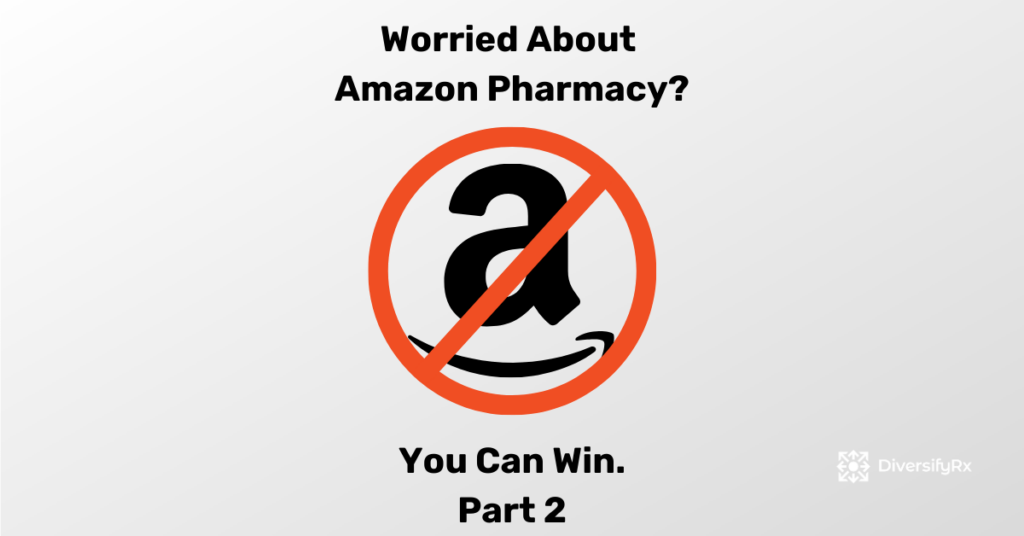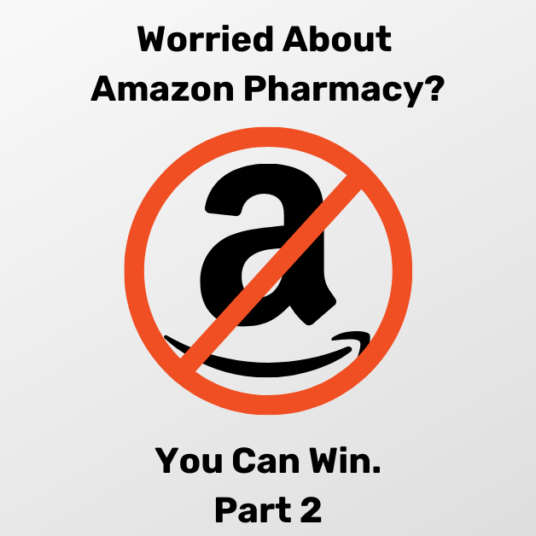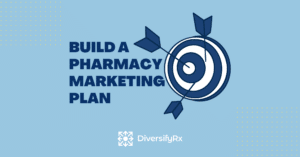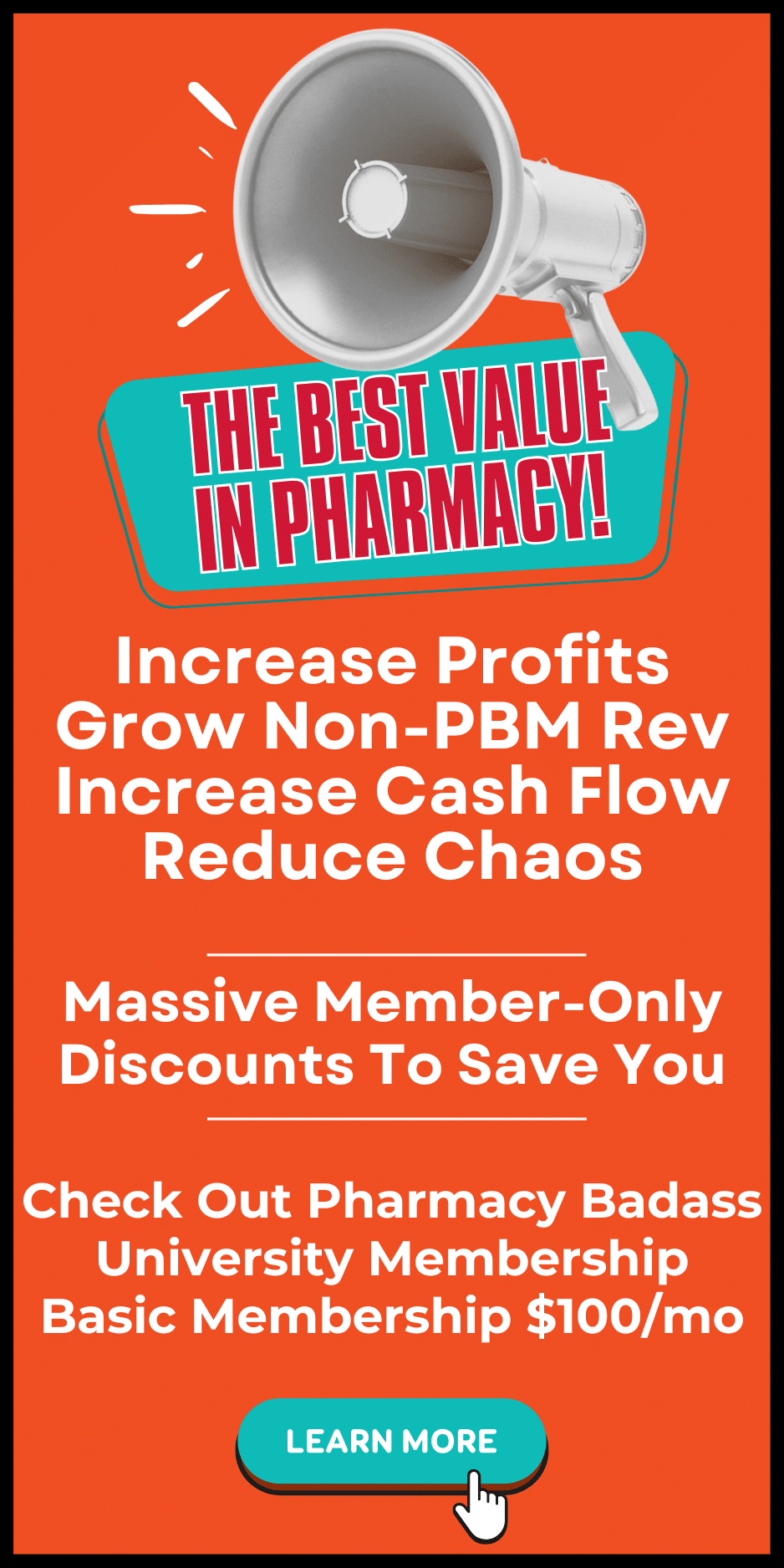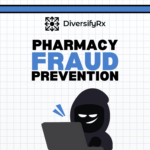Here is part 2 of How To Compete Against Amazon Pharmacy and Win, focusing on the unique services you can provide and Amazon Pharmacy can’t.
If you missed part 1, read it now HERE. Part 1 focuses on dispensing unique prescriptions that Amazon Pharmacy can’t.
Amazon Pharmacy can do many things best in class; logistics, user-friendly website, price negotiation, and marketing, to name a few. You won’t beat them at those games. You can beat them at one-on-one personal service, relationships with prescribers and patients, and improving your community’s health by actively working together with other healthcare providers. Convenience may attract patients initially; what they really seek from a pharmacy is a path to becoming healthier. When you provide that path, they will remain your patient no matter who the competition is. Here are three services that will improve patients’ health, create additional revenue for you (and sometimes your prescribers), and are not available through Amazon Pharmacy.
- Pharmacogenetic Testing (PGx)
- Remote Patient Monitoring (RPM)
- Point of Care Testing (POCT)
Pharmacogenetic Testing
Pharmacogenetic testing has been on a rollercoaster ride over the past several years, very similar to compounding. Several years ago, it had its hay day. Payers widely covered it with little requirements, and therefore it was abused and quickly turned off as a benefit to most patients. PGx testing has made a comeback as its usefulness is undeniable, and when correctly used, it can save the healthcare system (and taxpayers) significant costs.
Pharmacists are the ideal healthcare professional to be involved with PGx testing. Pharmacists spend years learning about prescription products’ metabolic pathways and are the medication experts, more so than physicians or nurses. It makes sense that pharmacists would be the go-to for interpreting how a person’s gene variants may impact their medication therapy effectiveness and side effect profile. For the most part, though, pharmacists have not been involved in this opportunity. A recent change that prohibited labs from interpreting their tests is allowing pharmacists back in. We need to grasp this opportunity, take good care of it, and continue to be able to provide it for years to come.
Get Trained
While pharmacists are the most qualified, this is a new area of practice for many pharmacists. Pharmacy school didn’t necessarily teach us all we need to know as this field is evolving quickly. To interpret patients’ tests, you first need to get trained. There are many CE courses out there, none that I have found are as comprehensive as the 16-hour certification from RxGenomix. RxGenomix is a pure PGx company. It was founded and is currently lead by pharmacists Brad Tice, PharmD and APHA president for 2019-2020, and Blake Keller, PharmD. They have a passion for pharmacists and independent pharmacies and are bringing many opportunities to the market. Be sure to use the code wellpgx2020 to save on your CE course.
Through RxGenomix, you can earn $90 per test interpretation. As a pharmacist, this means getting paid for your cognitive and clinical services. PGx revenue is not tied to dispensing prescriptions or to PBMs in any way. It is pure service-based revenue. Also, PGx revenue from RxGenomix is headache-free. You are not responsible for billing the tests or worry about collecting payments for the tests. As a pharmacist, you focus on screening patients, interpreting the results for physicians, and optimizing patients’ therapies.
Contact RxGenomix through their website, email Nathan at nl*******@*******ix.com, and be sure to use the code wellpgx2020 or tell them you heard of them through DiversifyRx.
Remote Patient Monitoring
RPM is a technology that enables patient monitoring outside of a structured clinical setting. Monitoring can take place in the patient’s home or as they go about their normal activities. Additional monitoring gives additional information to the physician to help improve each patient’s treatment plan. In the past, RPM placed an enormous burden directly on the physician. This burden prevented wide adoption and many patients missed out on this beneficial service.
Medicare and many other plans cover RPM services. Recent changes in the billing requirements now allow third parties to be involved, so the physician doesn’t have to do it all anymore. Physicians can outsource the heavy lifting, which makes RPM scalable. Now, pharmacists and physicians can enroll hundreds and even thousands of patients into RPM without hiring additional staff or increasing overhead expenses.
Pharmacists Role In RPM
Independent pharmacies are in a unique position to help both physicians and patients with RPM. The majority of physicians are not aware that RPM is now easier than ever to implement. Independent pharmacy owners and pharmacists can leverage your close personal relationships with community physicians and help them implement an RPM program. RPM will drive new revenue to physicians and bring these patients directly into your pharmacy. Pharmacies can earn revenue by performing enrolling services. Once these patients walk through your doors, get ready to offer other services they may qualify for (ahem, PGx!). At the very minimum, asking them to transfer their prescriptions to your pharmacy.
Monetary Impact
Physicians not only get the chance to improve their patient outcomes, but they also create a new revenue stream for their practice. Only 20 patients will generate approximately $2,400 net a month for the physician. Those same 20 patients will produce about $200 net a month for the pharmacy plus any additional services or prescriptions you provide for them. For the pharmacy, if you extrapolate to 6 prescribers each with 100 eligible patients, that would mean $6,000 a month in additional revenue.
Choosing the Right Partner for RPM
RPM service providers are popping up everywhere. How do you know the good from the bad? A good company will offer at a minimum:
- The best in class technology to every patient.
- Daily monitoring and alerts for all patients.
- A HIPAA compliant portal for accessing real-time patient data at any time.
- Strict adherence to all billing requirements.
DiversifyRx has researched many different RPM companies, and we recommend TM Pharmacy Consulting. You can get all the information you need by clicking HERE.
Point of Care Testing
Local health care providers are the best to render acute care services. POCT is perfect for pharmacists to provide. Pharmacists are easily accessible and can dispense the prescribed treatment if needed. There are various POCTs available, from cholesterol, A1C, flu, strep, UTI, anemia, COVID antibodies, COVID infection, HIV, and others. Point of care testing essentially refers to a test that will show a result in a short amount of time. Generally under 30 minutes and often much quicker.
In some states, pharmacists can have protocols or even have innate scope to prescribe a treatment based on a result of a POCT. In addition to prescriptions, pharmacies can also sell symptom-relieving OTCs. Even if your state is generous with protocols or their scope of practice, many pharmacists still want a physician back-up available. Using a POCT product that offers telehealth services will provide access to a physician if legally or clinically required.
Doing POCT the Right Way
Do you have a CLIA waiver?
If not, you should apply for one now. The application is generally painless, and it may require you to pay a small fee. You do need to list the POCTs you plan on providing. There is no requirement to provide every test you name, so go ahead and put down anything you might be interested in giving to patients.
Most applications that I have seen require you to list the specific product information. I recommend you look into the tests provided by Physician 360. They have many easy to use tests currently available, and several more they are developing. Physician 360 also offers a telehealth network that includes a visit with each kit and as stand-alone visits. You can save by using the code 5offP3601014 when purchasing from Physician 360. Physician 360 has just launched an ear infection telehealth kit. It’s the first of its kind that I am aware of.
You need to be aware of all workplace safety guidelines from OSHA. If any employee is at risk of being exposed to contagious bodily fluids at work, you must provide protective equipment and training to every employee. Employees would need to complete bloodborne pathogen training, and you need to comply with all local guidelines as well. You may also be required to provide certain vaccines for exposed employees. These rules would apply if you are doing A1C, cholesterol, or other blood-based tests.
Personal Services Are The Key
Service-Based revenue is the key to beating Amazon Pharmacy along with mail-order, PBMs, chains, and any other competitive force. Amazon Pharmacy is convenient, but they can’t compete with clinically-based personal services you can provide to your community. Help your patients move along their health and wellness journey, and you will have patients for life. If you missed part 1, be sure to catch up HERE.



